





Antritis
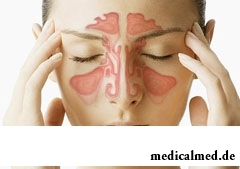
Antritis – an inflammation of a Highmore's bosom.
The Highmore's bosom, is a pair adnexal bosom of a nose, the small cavity located in a skull on each side from the nasal courses. The cavity is covered by a mucous membrane. (1-3rd) the Highmore's bosom is reported by small pass with a nose. Highmore's bosoms play an important role: in them the air inhaled by a nose (that is why it is necessary to inhale air a nose, but not a mouth) is warmed and purified, besides, they perform function of resonators when pronouncing sounds. At antritis both of these functions are broken.
Antritis reasons
Most often antritis develops as a complication after the postponed viral infection – ORZ, a SARS or flu. Viral infections are followed by rhinitis during which the mucous membrane of a nasal cavity inflames and swells. As it is directly connected with a mucous membrane of Highmore's bosoms, the inflammation is inevitably transferred there. That is why at cold the voice changes, gets special sounding, "in a nose". As passes, the connecting Highmore's bosoms with a nose, are very narrow, because of hypostasis of a mucous membrane they can be blocked completely. Thus, in the closed cavity of Highmore's bosoms with the inflamed mucous membrane slime and other products of an inflammation accumulates, and pus is formed afterwards. So antritis begins.
Inflammatory process in upper molars can be the cause of hit of an infection in a Highmore's bosom. In this case there is odonotogenny antritis to which rhinitis does not precede. One more reason of development of antritis – an allergy, namely, allergic rhinitis.
Types of antritis
Antritis can be one - or bilateral.
On a clinical current acute or chronic.
On character of an inflammation acute antritis can be catarral or purulent. Chronic antritises happen the following types;
- Hyperplastic antritis at which the mucous membrane is thickened, narrowing a gleam of a bosom and the opening reporting a bosom with a nasal cavity;
- Polypostural antritis during which on a mucous membrane of a Highmore's bosom polyps – the grozdyevidny soft growths filling a bosom cavity are formed;
- Atrophic. At this type of antritis the mucous membrane atrophies and ceases to perform the functions;
- Mixed. At the mixed antritis type on a mucous membrane of a Highmore's bosom there are sites with different types of chronic inflammatory processes.
Symptoms of antritis
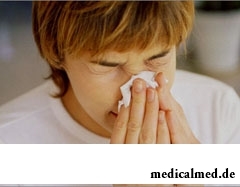
Symptoms of antritis appear usually for the fifth or seventh day of a disease of a viral infection when instead of the expected simplification there occurs deterioration in the general state, temperature rises, there is a headache. Pain amplifies when pressing on cheeks in a nose bridge. A symptom of antritis is change of nature of allocations from a nose which become purulent and get an unpleasant, congestive smell.
Symptoms of antritis in a chronic form are shown periodically as the current with remissions and aggravations is peculiar to chronic antritis. During aggravations chronic antritis proceeds is similar with acute, and during remissions of the patient nothing can disturb, or frequent headaches disturb.
Symptom of antritis in a chronic form is also exposure to viral infections as, first, the center of persistent infection in an organism undermines immunity even more, and secondly, the mucous membrane of Highmore's bosoms does not perform the functions on cleaning and warming of the air coming to a nasopharynx. Thanks to changes in a mucous membrane there is one more symptom of antritis – "nasal" sounding of a voice.
Features of course of antritis at children
Antritis at children up to four years does not happen because of anatomic features. The matter is that up to four years Highmore's bosoms at children are not developed, they represent the narrow cracks which are not containing air. By four years, in process of growth of facial bones of a skull, bosoms form in the form in which adults have them – in the form of the cavities covered by a mucous membrane. From this age antritis at children can arise owing to the same reasons, as antritis at adults.
Feature of course of antritis at children is tendency to more rapid current of process. As well as many other infectious diseases, antritis at children more often happens acute, than chronic. Other feature of antritis at children is that the inflammation is easier, than at adults, extends out of limits of Highmore's bosoms, for example, in infraorbital space. Because children in general have respiratory infections and cold more often, often antritis at children long time remains not distinguished.
Treatment of antritis
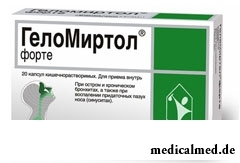
Treatment of antritis is in most cases made in the conservative way, using the general and local medicamentous therapy, and also physiotherapeutic means. However in the heavy, started cases resort to operational treatment of antritis.
The general treatment of antritis is appointed, proceeding from the reason and a form of a disease. At antritises of an infectious origin antibacterial and anti-inflammatory drugs can be appointed. Recently medical tactics concerning prescription of antibiotics at antritis changed. The general antibioticotherapia which was earlier considered necessary, now is carried out only according to serious indications now, preference is given to topical administration of antibacterial drugs.
The matter is that it was found out that because of hypostasis blood circulation in a mucous membrane of Highmore's bosoms at antritis is broken, and antibiotics from blood arrive to the destination in extremely insignificant, trace quantities. At the same time a large number them circulates on an organism. At the same time it is necessary to consider that an antibioticotherapia always the side effect has immunity suppression. As a result antibiotics at antritis are in most cases inefficient as harm causes more, than advantage.
For treatment of antritises of an allergic origin appoint antihistaminic drugs.
However at any kinds of antritises the main treatment consists in local therapy. Topical treatment of antritis consists in purpose of vasoconstrictive drops in the first five days of a disease, for the purpose of removal of hypostasis of a mucous membrane and creation of outflow. It is necessary to consider that in the next days and at chronic antritis vasoconstrictive drops are not effective. Washing of a nose solutions of anti-inflammatory drugs is appointed each 3-4 hours.
If it is not possible to create outflow and to remove pus from Highmore's bosoms, in polyclinic conditions do a bosom puncture, by means of a long needle. It allows to evacuate decomposition products and to directly wash out a bosom cavity solutions of antiseptic agents.
For treatment of antritis in a chronic form fortifying means are appointed, the physical therapy is very effective in this case: UVCh, microwave oven, lazero-and magnitnoterapiya. Sanitation of an oral cavity is also necessary to exclude penetration of an infection from carious teeth of an upper jaw.
To tell even the shortest and simple words, we involve 72 muscles.

Each of us faces from time to time that other people need the immediate help. We react to it on-raznomu:...
Section: Articles about health
The pancreas performs two functions in a human body: release of enzymes without which digestion of carbohydrates, fats and proteins, and a producing hormones is impossible. The most important of them - insulin, is the main participant of carbohydrate metabolism, a normal...
Section: Articles about health
Feeding by a breast - the integral part of ideal motherhood allowing to come into contact with the kid and to create to it healthy immunity since early years. Nevertheless, this important process in life of mother and child can be saddened laktostazy − by a milk delay in a mammary gland. What main reasons for a laktostaz? How not to allow problems with breastfeeding? Let's consider 10 premises resulting in stagnation of milk at the nursing mother....
Section: Articles about health
Work of a brain is extremely complex and in many respects is not studied yet. It is confirmed also by the features of thought processes which are shown in...
Section: Articles about health
Coffee – favourite drink of many. For the last decades it more than once already declared very harmful, extremely useful and even necessary for normal life activity. In spite of the fact that this product became for us usual for a long time, exists much...
Section: Articles about health
Several decades ago the basil (the district khan, реан, Reagan) was considered as a part of the Caucasian or east cuisine, but today it strongly took the place on tables of Russians. Greens of this plant possess a strong, pleasant smell and specific fresh taste because of which it is included almost in all dry mixes of spicy herbs, and also give to meat and fresh fish dishes....
Section: Articles about health
For the last decades the diabetes mellitus of the second type became really world problem. Number of cases annually cart...
Section: Articles about health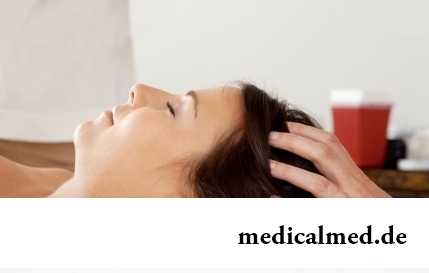
On the head of the person about one million hair follicles, or as they are called still, hair bulbs are located. At the time of the birth most of them is in the "sleeping" state, but within several weeks follicles become more active, and from them begin р...
Section: Articles about health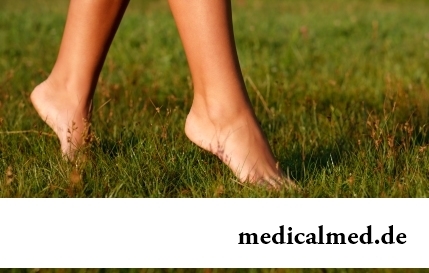
Weakness of an ankle joint – very widespread problem. Its existence is demonstrated by tendency to a podvorachivaniye of legs when walking on heels, frequent painful sprains, pain on average and anonymous toes even after small loadings. Usually people with such pathology take off unpleasant effects by means of the anesthetizing pulverizing and ointments, but it does not lead to radical elimination of a problem. Meanwhile, at the known persistence it is possible to strengthen an ankle to the house...
Section: Articles about health
Each person has easy indispositions which he transfers "standing", trying not to ask for medical care. Argu...
Section: Articles about health
Life does not indulge the modern woman special emotional comfort and carelessness. The fatigue, troubles at work, misunderstanding in a family and various illnesses immediately affect a condition of hair and skin. And to look safe and attractive so хоч...
Section: Articles about health
Producers of milk mixes for children assure: mixes are ideally balanced and adapted for needs of babies. If mother should raise artificially the kid owing to serious problems with health, to do nothing – it is necessary to feed with substitutes of milk. However pediatricians note that not seldom women without good reasons refuse feeding of the child a breast and pass to milk mixes. Common causes of such decision – the aspiration to leave quicker...
Section: Articles about health
Eyes – unique body on the structure thanks to which the person obtains about 80% of information on the world around: about a form...
Section: Articles about health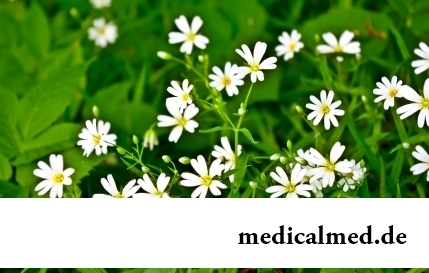
Wood louse – the ordinary-looking unpretentious plant extended in all territory of our country. It quickly expands, and sometimes fills sites, bringing a lot of chagrin to gardeners. Perhaps, they would be upset less if knew that the wood louse is the prices...
Section: Articles about health
Life of the modern child is extremely active and difficult. Information strain which is experienced by the school student and did not dream pupils of last times. Careful parents, wishing well to the children, will organize a set of additional classes in circles, sports sections and music schools. In such situation the child needs continuous care and good nutrition to keep health and high performance....
Section: Articles about health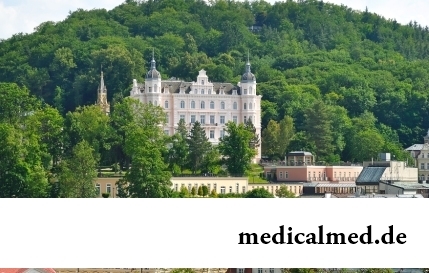
People know that thermal sources have salutary force long ago. Treatment by natural waters is one and...
Section: Articles about health
Any person who faced a disease knows that treatment costs expensive. It belongs also to consultations of qualified specialists, and to the diagnostic procedures which are not included in the list of obligatory medical services. Question of cost of medicinal Wednesday...
Section: Articles about health
Diseases of joints often begin imperceptibly for the person. The first stages of destruction of the cartilaginous tissue providing soft and free sliding of heads of bones in joint bags proceed slowly and absolutely without serious consequences. Especially unpleasantly for the fact that this process is not connected with advanced age: degradation of joint surfaces is, as a rule, noticeable after 30 years. It means that practically each able-bodied person at any time can face sad results...
Section: Articles about health
The metabolism at each person proceeds in own way. However dependence between the speed of this process and disposal from superfluous in...
Section: Articles about health
The words "disease" and "patient" not without reason come from one root – "pain". As a rule, symptoms of illnesses thoroughly spoil to patients life. However from this rule there are exceptions. Some diseases are shown by signs which can cause even полож...
Section: Articles about health
During foot walks blood moves on vessels more actively and one and all bodies are supplied with a large amount of oxygen. It affects the state of health of the person very positively....
Section: Slideshow
The advantage of swimming for the person is so high that this sport is not only the most popular, but also is widely applied in copper...
Section: Slideshow
Very often as a source of the infection which caused a disease serves our house - the place which a priori has to be safe. However disease-producing bacteria can perfectly feel not only in insanitary conditions, but also in our apartment if not осущ...
Section: Articles about health
Aspirin (acetylsalicylic acid) – one of those drugs which are known literally to all. It is available in each home first-aid kit, and many accept it at the first signs of an indisposition, often without having a fair idea of properties and therapeutic effect of drug. Meanwhile, impact of aspirin on a human body is very various, and is not always favorable. About it it is important to foreknow, in order to avoid emergence of problems with health....
Section: Articles about health
The unpleasant feelings connected with spring breakdown are familiar almost to each of us. Often happens that in March-April on the person...
Section: Articles about health
Stability of a hormonal background is one of the most important conditions of preservation of health of the woman. At the same time endocrine system – the thin device extremely sensitive to any external influences. Changes of an image жиз can become the reason of hormonal failure...
Section: Articles about health
The cosmetics intended for improvement of a condition of skin, nails and hair are used by each woman. Expenses on regular acquisition of the fashionable widely advertized products of well-known companies for many become very notable and significantly burden the family budget. Meanwhile, there is a number of inexpensive pharmaceutical drugs which can quite be applied in the cosmetic purposes. At the same time the effect of their use is often more noticeable, than result of use of the most expensive...
Section: Articles about health
